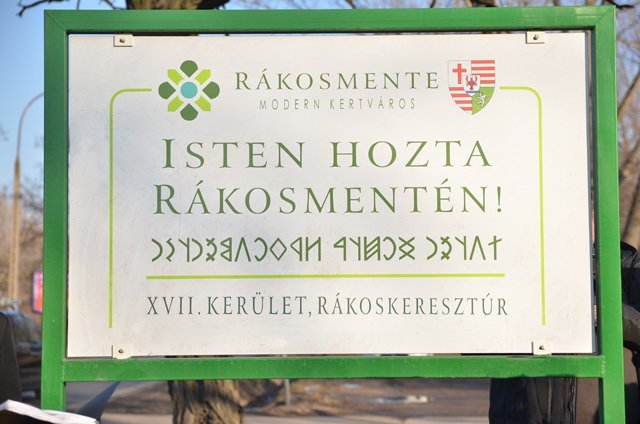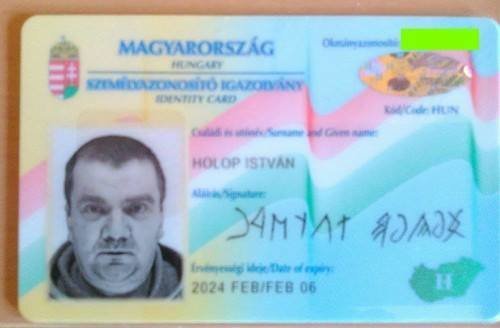Rovás, The Székely – Hungarian Alphabet

The old Hungarian script is also known as Hungarian Runes or Székely-Hungarian Rovás. The word “rovás” derives from the verb “róni” (carving letters). It’s a Hungarian terminology which describes the technique of writing.
Those who used “rovás” usually wrote it on wooden sticks or rocks in ancient times. The runic alphabet includes 42 letters but it does not contain such letters like “dz, dzs, q, w, y” since these letters are rarely used in the Hungarian language. The letters of the runes have a squared form because it is easier to jot them down than to carve arched ones. Interestingly, the runic writing was usually written from the direction right to left – just like in the Arabic alphabet – because it was a lot easier to take the stick in the left hand and to write the text from the right side to the left. Sometimes an entire word was written with a single sign for practical reasons. Moreover, omitting some vowels was a common phenomenon, especially with such vowels which were evident to pronounce – for example, the most frequent vowel in the Hungarian alphabet: “e” – so they could save time in writing without messing with the meaning.
The origin of this ancient script has not been clearly revealed yet, the usage might have appeared in the 6th – 7th centuries. Several archeological sites and findings prove that even our conquering ancestors used this alphabet. It should be noted, however, the Székely-Hungarians used this type of writing until the 11th century in Hungary. After the establishment of the Christian Hungarian kingdom the script became less and less used and slowly forgotten because the Latin alphabet was adopted and forced to use. However, only a small layer of the society could use the Latin alphabet, thus the Hungarian runic script was only used among village people in medieval times. In remote parts of Transylvania, however, the runes remained in permanent use and were taught at schools until the 18th century.
During the Habsburg Empire, Hungarian and German language were the two official languages, thus a third one (the runic) would have been too much to learn for average people. Moreover, it was prohibited to use this ancient script for official purposes.
As it was mentioned above, currently the Hungarian Rovás have been increasingly used among Székely-Hungarians. Primarily, it is actively used by those people who regard it as the traditional Hungarian symbol. Moreover, university students also use it as their secret-writing method. Interestingly, the government does not prefer the former due to its nationalistic nature.
 Welcome to 18th district! (Photo: www.rakosmente.hu)
Welcome to 18th district! (Photo: www.rakosmente.hu)
Furthermore, the today’s generation prefers to research the origin of the Hungarian Runes and tries to preserve this traditional script. Since the early 20th century, lots of associations and civil organizations have been founded aiming to research the Székely-Hungarian runes. Several groups are interested in how to use the runic writing in computer science and in business areas as well.
Last but not least, the Székely-Hungarian Rovás have already appeared in the book market. In 2009 the first book appeared in bookshops that was printed in Rovás. It was the “Egri Csillagok” written by Géza Gárdonyi. Later, the book “7 and 7 Hungarian folk-tales” of Gyula Illés was also printed with this traditional ancient script. Since then, more and more books with Rovás have been published in Hungary and Transylvania. Furthermore, the runic-printed version of the whole Bible was given to XVI. Pope Benedict two years ago.
Currently, the ancient Székely-Hungarian script has become popular again among Hungarians. Some days ago the media was shocked when they saw a Hungarian ID card with a signature in Rovás. According to Index.hu website, that ID wasn’t accepted in some offices and banks because the employees were not able to check the man’s signature for identification. Both the picture and the signature are important identifying tools of checking the real identity in official cases. According to the Central Office for Administrative and Electronic Public Services, no matter what kind of signature the person uses for his or her official documents in any language, it must be regarded as an official one if every document will be written with the same signature irrespective of its legibility.
by Valentina Leanyfalu
Photo: rovasiras.freewb.hu,
Source: https://darkgoldenrod-woodcock-377971.hostingersite.com/






